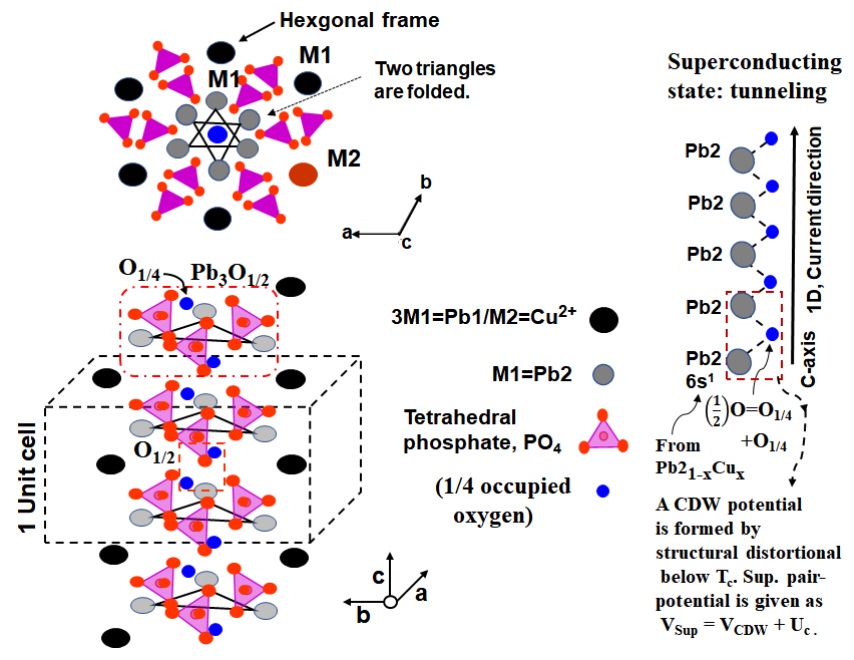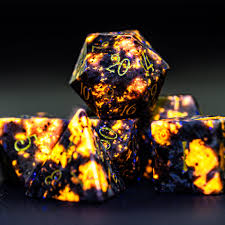LK-99 is quite likely a room-temperature superconductor, or if not it points the way towards building one. But LK-99 is not going to be as easy to synthesize as you have been told, and it's going to be a long, long way to viable applications. Unless we cheat...
🧵1/33
🧵1/33

LK-99 is a variation of lead apatite, a mineral. Calcium apatite is what your bone and tooth enamel are made of. Lead apatite is the same mineral, but with calcium atoms replaced with lead. It is also a scaly mineral that forms in lead-contaminated pipes. 2/33 

Now you may not know this, but bones are semiconductors. They conduct a small amount of current, within specific energy bands. It's part of how cochlear implants work. They are also anisotropic--the current moves along directional lines due to the alignment of the mineral. 3/33 

Lead apatite is a better conductor, but has the same anisotropic properties. Within the apatite mineral lead atoms are arranged close enough that electrons can hop from one to the next, but only along the lines of lead in the crystal lattice. The phosphates are insulating. 4/33 

So, essentially, lead-apatite is not a metal, but rather a mineralized bundle of wires, each of which are exactly one atom wide. And its properties don't resemble the malleable lead from which it is formed, but rather that of bone or rock: conductive tooth enamel. 5/33 

Conductors can shuffle electrons around because they have shared, delocalized outer shells with very small energy gaps that electrons move freely between. There are multiple states with different energy levels though, and changing between them adds friction (resistance). 6/33 

Low temperature superconductors cool the electrons so much that they only have enough thermal energy to exist in one state. Without sufficient energy to jump between states there is no resistance to motion. Alternatively high pressure makes the energy gaps larger. 7/33 

Either way the result is electron motion without friction. Without multiple states to change between, quantum mechanics prevents the electron from dissipating energy as it moves. The material freely conducts electricity without resistive losses. 8/33 

So to recap, for superconductivity you need a single delocalized electron state with a sufficiently large band gap separating the higher energy states that thermal motion alone is insufficient to move the electron between them. We can do this for low temp or high pressure. 9/33 

Metallic bonding creates a lot of finely spaced conductive bands. Every atom in the lattice creates metallic bonds with every other atom arranged around it, and these states are delocalized throughout the whole conductor. 10/33 

Now for the Nobel-worthy contribution from Lee and Kim: apatite as a mineral confines its metal atoms (calcium in bone, lead and copper in LK-99) to be in a linear chain, so it doesn't have the blowup of electron states that a 3D crystal structure would have. 11/33 

Furthermore, by replacing every 8th lead atom with copper (a highly strained and unnatural configuration), the few electron states remaining become separated by high energy gaps. There exists just one delocalized electron state that electrons freely conduct through. 12/33 

This is typical of engineering: we constrain the problem domain, reducing degrees of freedom to be something manageable, then tweak the system to have the desired properties. By using mineralized 1D conductors, the electron state space is reduced to an enumerable set. 13/33 

By substituting copper atoms for lead in specific locations, L&K strained the metallic bonds to separate these electron states (requiring higher energies to enter), and purportedly got the gap so wide that thermal motion at room temperature is insufficient to jump the gap. 14/33 

To recap, we're talking about a anisotropic bone-like mineral that conducts electricity along a specific line, with the conducting metal atoms substituted to provide an electron energy gap larger than room temperature thermal motion. 15/33 

Such a material would conduct electrons in a single direction along that mineralized conductive wire, without any resistive losses. A room temperature, ambient pressure superconductor. 16/33 

This is not your daddy's superconductor though. The anisotropic properties means that it doesn't conduct circular eddy currents, making the classical levitation-over-a-magnet effect difficult to achieve. But don't dampen expectations: most applications would be unaffected. 17/33 

Now let's talk about why there has been so much trouble replicating the superconductivity results for LK-99. Remember when I said L&K replaced every 8th lead atom with copper in a highly strained bonding relationship? That should have raised your eyebrows. 18/33
Minerals generally crystalize in lowest energy, uniform structures. You can crystalize structures that have periodic substitutions, but it is hard to do so reliably when these don't result in lower energy configurations. 19/33 

The approach outlined in the paper is to very evenly mix your sources of lead and copper, then to bake in an oven at high temperature. This last step provides the energy required to generate high-energy, strained states, but only stochastically. 20/33 

By using the right molar ratios and crystalizing at high temp you can ensure that the right number of copper atoms replace lead in the unit crystal, but there is no way to ensure with this method that the linear chain of conducting atoms is strictly alternating as required. 21/33 

Still you will get by chance some regions that have crystalized in the desired configuration. And with the right preparation steps maybe you can get these regions to selectively bind together. Or cleave the sample in such a way as to break it along superconducting lines. 22/33 

Maybe. This isn't really detailed in either paper, and the L&K have had 20 years of trouble themselves reliably replicating their results. Sometimes it works, sometimes it doesn't. But this is to be expected as the process is probabilistic by nature. 23/33 

Still if done properly and the theory is correct, you should expect some grains of LK-99 material prepared to have room temperature, ambient pressure superconducting properties, and isolating and studying these tiny samples would be validation. 24/33
https://twitter.com/iris_IGB/status/1685731177523449856
But even if the result replicates--and it might take a long while for other labs to create samples with islands of superconductivity, as well as figure out how to isolate and examine those parts--there is still a mountain of work required to manufacture at scale. 25/33 

The problem is that this linear superconductivity requires a strictly alternating sequence of Pb-Cu-Pb-Cu atoms, but crystalizing in an oven is an inherently disordered process. You can't use thermal energy to create strained structure and expect orderly results. 26/33 

One logical solution is chemical vapor deposition. This is a process already used in semiconductor fabs to create alternating layers of material. To do so with minerals in an oven, and with atomically precise alternating layers is not impossible. But it won't be easy. 27/33 

The conventional bet is on CVD. But there's another possibility: synthesize the material by building up layers ion-by-ion by placing reactive feedstocks molecule by molecule with atomic precision. This is mechanosynthesis AKA machine-phase chemistry. 28/33
If you can build structures atom-by-atom with atomic precision, room temperature ambient pressure superconductors are one example product that becomes trivial to manufacture--either LK-99 if it works, or twisted graphene sheets inside of a diamond clamp. 29/33 

But AP manufacturing can also make highly reliable quantum computers, material that is lighter than plastic but harder than steel, more efficient photovoltaic cells, and computation orders of magnitude more efficient than TSMC's latest chips. 30/33
That's just the tip of the iceberg. Advanced AP medical nanotechnology promises an end to all disease and aging, enhancement of the human condition, and a redefinition of what it means to be human. Green AP mfg. could reverse climate change. 31/33
That's why I'm working to make atomically precise manufacturing a reality. With this core manufacturing capability we can deliver as much RTAP superconductors--and other products--as the world needs, radically transforming the global economy. 32/33 theguardian.com/science/small-…
If this interests you, reach out to me. We're assembling a team.
END🧵
END🧵
https://twitter.com/fodagut/status/1648233004458971136
• • •
Missing some Tweet in this thread? You can try to
force a refresh

 Read on Twitter
Read on Twitter



